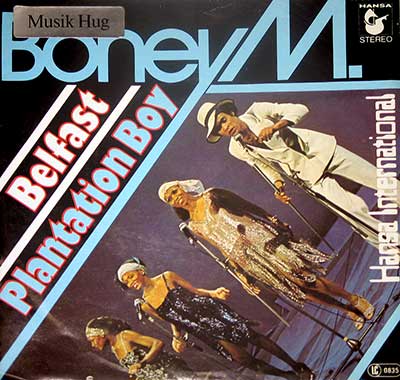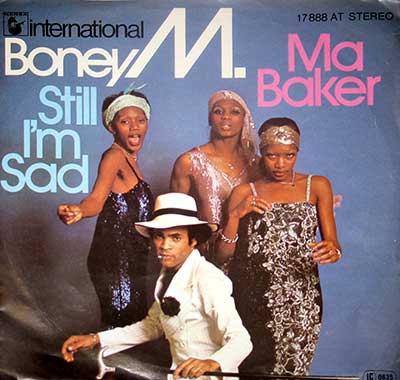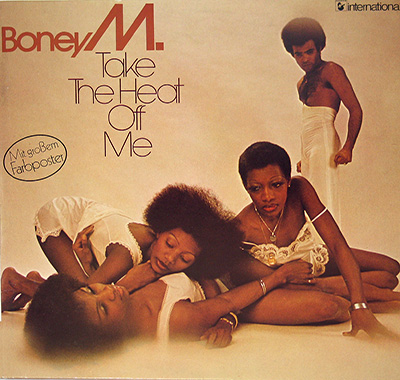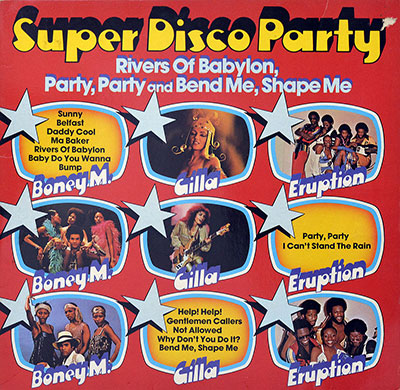Boney M – "Nightflight to Venus": A Synchronized Descent into Euro-Disco Orbit
When Boney M released "Nightflight to Venus" in July 1978, the musical landscape in Europe was pulsating with glitter, synth, and the unmistakable beat of disco. But Boney M didnÕt just ride the waveÑthey engineered a spacecraft. This third studio album marked a pivotal moment in both the band's trajectory and the evolution of 70s Euro-Disco, with Frank Farian acting not merely as producer, but as sonic architect.
Historical Context: The Pulse of a Divided World
Europe in 1978 was a continent caught between Cold War anxiety and carefree hedonism. The dancefloor was becoming a political space, and Boney MÕs musicÑmultinational, multi-ethnic, and multi-genreÑwas both unifying and electrifying. Their hybrid of Caribbean rhythms, disco pulse, and theatrical flair broke barriers in Germany, Scandinavia, and the UK, while also nudging into the American mainstream. That year, "Nightflight to Venus" topped charts across Europe, serving as a transnational antidote to cultural malaise.
Musical Exploration: From Synth Stardust to Biblical Refrains
The album opens with the title track, "Nightflight to Venus," a funk-laced, vocoder-drenched journey through interstellar rhythm. It leads directly into the stomping anthem "Rasputin", where Eastern EuropeÕs most infamous mystic is reborn as a dancefloor deity. Boney M dared to turn historical caricature into pop spectacleÑand succeeded with flair.
Other songs like "Painter Man", a cover of The CreationÕs 1966 hit, added psych-rock coloration to the mix, while "Rivers of Babylon" and "Brown Girl in the Ring" reimagined traditional and biblical songs through a reggae-disco lens. These tracks achieved mass success, especially in the UK where the double A-side became a cultural phenomenon. The albumÕs sequencingÑthe ethereal segue from beat-heavy disco to spiritually themed reggaeÑwas nothing short of cinematic.
Production & Recording: The Farian Formula
The sonic polish of the album owes everything to Frank Farian, whose studio in Rosbach, West Germany became a factory of hits. FarianÕs genius lay in his ability to blend synthesized orchestration with organic percussion, while layering harmonies that sounded simultaneously choral and commercial. His practice of using studio musicians and layering vocalsÑsometimes overdubbing himselfÑwas controversial, but the results were irrefutably catchy.
The use of 16-track analog recording allowed for FarianÕs richly detailed mixes, where basslines walked with purpose and strings soared like spacecraft. The vocalistsÑLiz Mitchell, Marcia Barrett, Maizie Williams, and Bobby FarrellÑbrought a range of textures, even if FarrellÕs contributions were largely visual and choreographic in live performances.
Controversies: Frontmen, Fakery, and Fame
The albumÕs commercial success couldnÕt shield it from criticism. Whispered rumors that Bobby Farrell didnÕt actually sing on the records began to surface. Frank Farian, as later revealed, had dubbed most of the male vocals himself. This revelation, however, did little to damage the groupÕs standingÑat least not in 1978. Onstage, Farrell remained the kinetic heart of the act, bringing flair and dance that turned every performance into performance art.
International Variants and Differences
The German pressing, which this article refers to, included a deluxe gatefold sleeve and a full-color Boney M. postcardÑa lush visual complement to the albumÕs interplanetary ambitions. However, other versions differed significantly. The Canadian and US pressings featured slight variations in track timing and vocal mixing. Some editions edited out the extended drum and voice intro on "Nightflight to Venus" or altered the segue transitions between songs. UK and US audiences also experienced different track orders depending on the label (Hansa vs Atlantic), which affected the albumÕs narrative flow.
Regardless of its pressing or country of origin, "Nightflight to Venus" remains a defining moment in the disco decade: theatrical, unapologetically synthetic, and sonically adventurous. It was a gamble that paid offÑwith chart-topping hits, sold-out shows, and enduring relevance as a disco classic that dared to tell stories across time, space, and culture.




